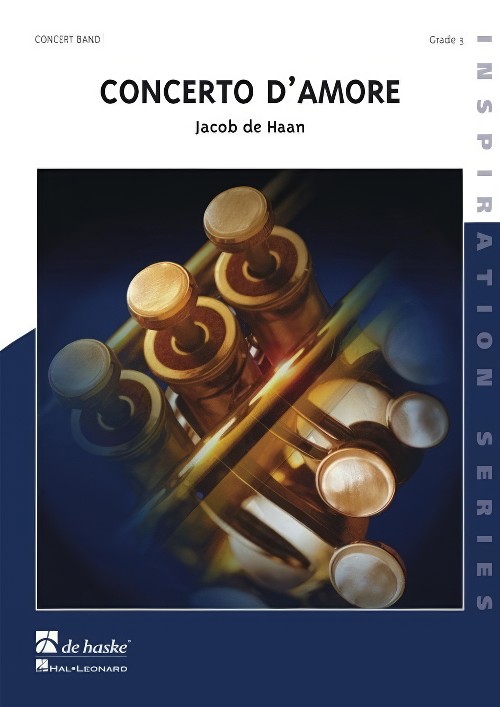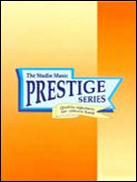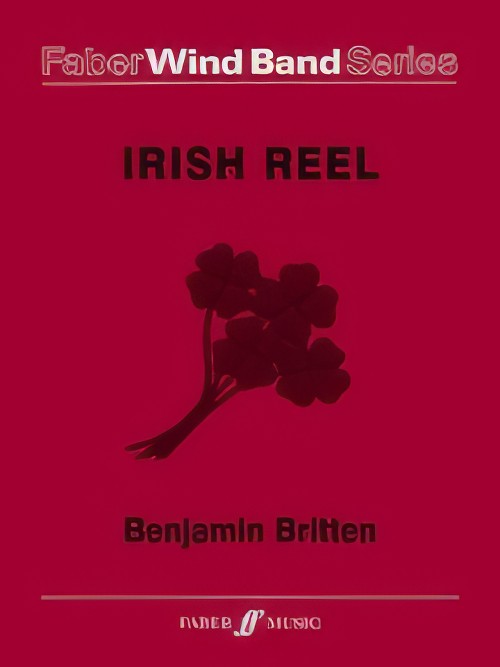Results
-
 £139.99
£139.99Concerto d'Amore (Concert Band - Score and Parts) - De Haan, Jacob
In Concerto d'Amore, a maestoso opening is followed by a quick and energetic movement that leads to a magnificent adagio. A motif from this adagio can be heard in a swinging movement, after which the piece comes to a close with the return of the adagio. This arrangement for concert band certainly brings this beautiful music to life.Duration: 7:19
Estimated dispatch 7-14 working days
-
 £112.95
£112.95ADRENALINE CITY (Prestige Concert Band) - Gorb, Adam
A Concert overture, inspired by both the stress and vibrancy of twenty-first century life. The harsh and dissonant opening passage is contrasted by a mellow second subject theme in the saxophones. The percussion come to the fore in the middle section, and, at the close of the work then harmonic tension reaches an exhilarating breaking point before resolving on the tonal centre of A. (Grade 6) Performance time 8' 14'' Recorded on Polyphonic QPRM151D TIME LINES (Great British Music for Wind Band Vol.12)
Estimated dispatch 7-14 working days
-
 £199.95
£199.95CHAUCER'S TUNES (Concert Band - Score and Parts) - Ball, Michael
Chaucer's Tunes (two sections of which began life as the theme music for a BBC radio series The Road to Canterbury) consists of six interconnected sections. These can equally well be played either as one complete continuous movement or as independent individual pieces. Includes: Intrada; Fantasia: Alma redemptoris mater; Intermezzo: The Wife of Bath; Carol: Es ist ein' Ros' entsprungen; Chase: Chauntecleer and the Fox; Finale. Duration: 10-11 mins. Grade 3.5
Estimated dispatch 7-14 working days
-
 £37.95
£37.95CHAUCER'S TUNES (Concert Band - Score only) - Ball, Michael
Chaucer's Tunes (two sections of which began life as the theme music for a BBC radio series The Road to Canterbury) consists of six interconnected sections. These can equally well be played either as one complete continuous movement or as independent individual pieces. Includes: Intrada; Fantasia: Alma redemptoris mater; Intermezzo: The Wife of Bath; Carol: Es ist ein' Ros' entsprungen; Chase: Chauntecleer and the Fox; Finale. Duration: 10-11 mins.Grade 3.5
Estimated dispatch 7-14 working days
-
 £45.00
£45.00Irish Reel (Concert Band - Score and Parts) - Britten, Benjamin - Woolfenden, Guy
This rousing piece was originally composed as title music for "Around the Village Green", a documentary film exploring changes to rural life in East Anglia. In the work Britten makes use of the folk tune "The Bottom of the Punch Bowl".
Estimated dispatch 7-14 working days
-
 £139.99
£139.99Trois Odelettes (Concert Band - Score and Parts)
Odelettesis the title of a cycle of poems by the 19th-century French writer, G?rard de Neval. In his work, Trois Odelettes, Jacob de Haan set three of de Neval's poems to music for soprano voice and concert band: Une All?e du Luxembourg describes a fleeting moment of love; Espagne is a typically sounding ode to Spain; and Chanson Gothique describes the joy of life itself. 0:07:15
Estimated dispatch 7-14 working days
-
 £84.99
£84.99Yakolo - Gerald Oswald
Yakolo is originally a dance song from Africa. It reflects the people of Africa's zest for life, following the maxim 'Come and join us!'. In this work, the 'call and response' principle is featured as a trademark element of traditional African music. The rhythmic melodies invite listeners to sing and dance along and thus give shape to the African art of celebrating together. The repeating themes will be sure to put a smile on everyone's face!
Estimated dispatch 7-14 working days
-
 £79.99
£79.99Beyond the Stars - James Curnow
Based on the traditional American shaped-note melody The Promised Land (first published in the 1800s), Beyond the Stars captures the spirit of the early American church musicians who voiced their enthusiasm for life and thefreedom of worship through both vocal and instrumental music. The music features several mini-variations wrapped up in four large variations (Fast, Fast, Slow, Fast-recapitulation). The composer has created new thematic materialfor each variation by excerpting motifs from three separate phrases of the original shaped-note melody. A stunning and powerful work for winds. Dur: c. 6:20
Estimated dispatch 7-14 working days
-
 £92.00
£92.00The Tower - Alexandre Carlin
The Tower was commisioned by the concert band of Auneau (France), for their 190th anniversary. The composer was inspired by a medieval tower standing in the city and decided to transcribe in music the life in the middle ages, the gregorian chant of the monks, a village festival, the building of the tower, step by step, and then the evocation of the battle of Auneau, one of the famous religious battles of the middle ages in France. The work ends with the regained calm, and the monks singing their gregorian chant at the end of the day.
Estimated dispatch 7-14 working days
-
£218.95
Heart Songs - David Maslanka
Heart Songs, another stunning piece by one of the most important writers of music for wind ensemble and band, takes its title from the image of the tree of life being "watered" by the blood of the heart. Like all of Maslanka's music, it is deeply felt and reflective in nature. The three movements of this suite embrace a variety of serious moods, movements two and three use familiar Bach chorales as the basis for unusually rich and original band writing at the highest musical level. Duration: 16'
Estimated dispatch 7-14 working days
